Australian Tropical Rainforest Plants - Online edition
Capparis quiniflora DC.
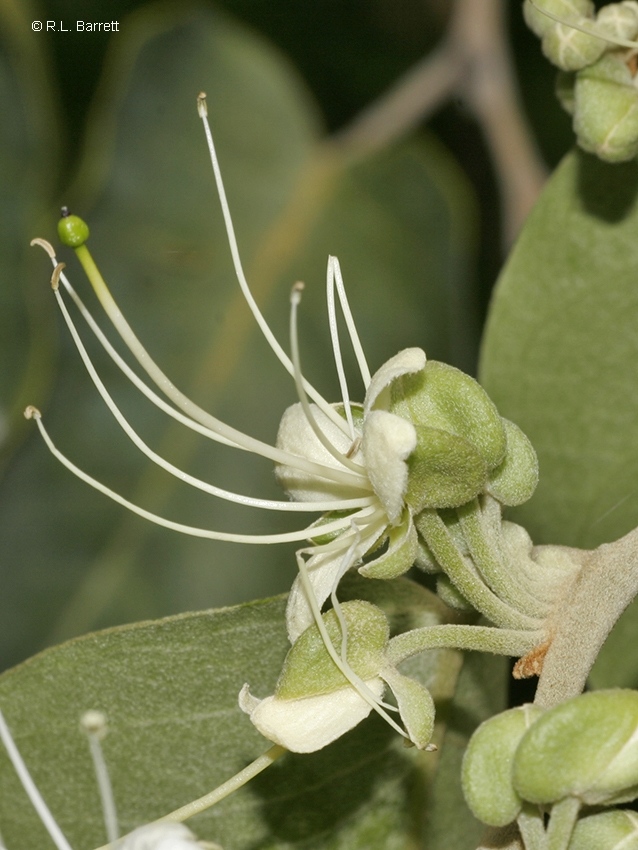
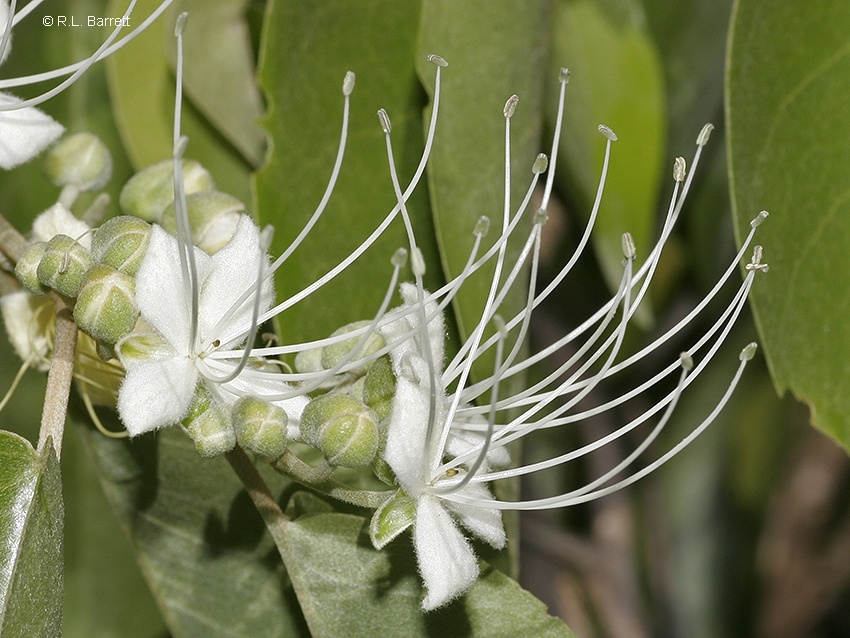

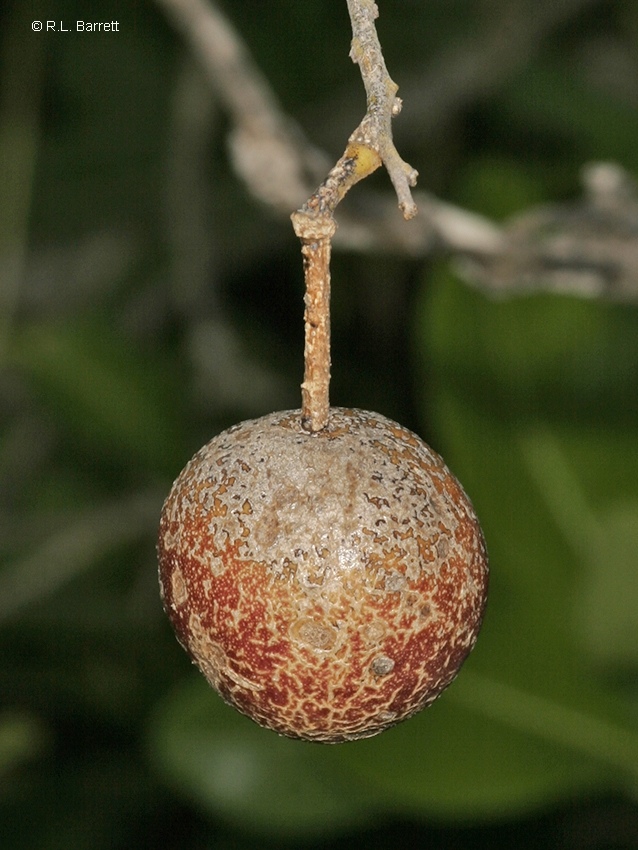
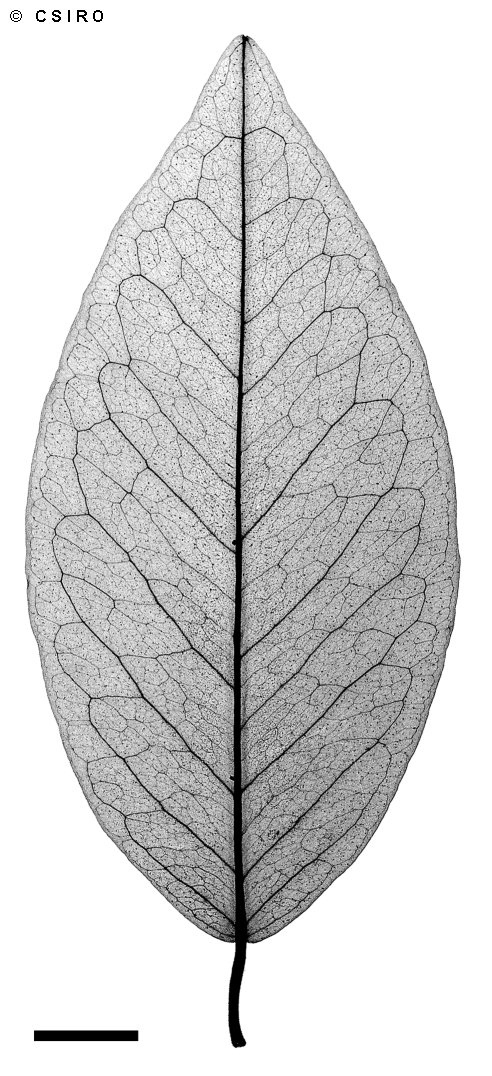

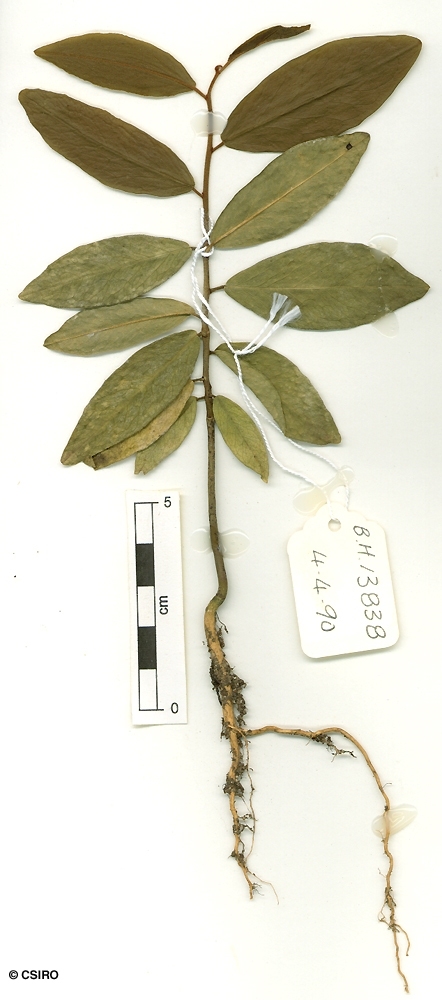
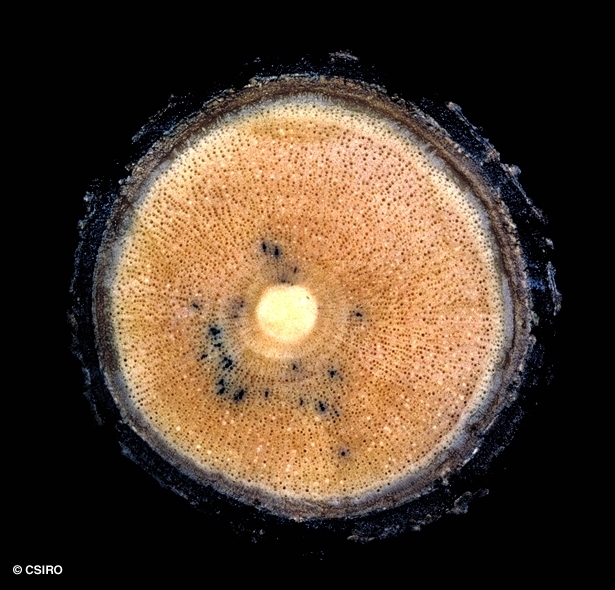
Candolle, A.P. de (1824) Prodromus 1: 247. Type: in Novae-Hollandiae ora boreali. (v.s. in h. Mus. Par.).
Usually grows to form a tree-top vine but can flower and fruit when still at the shrub stage. Vine stem diameters to 5 cm recorded.
Fruit subglobular, about 2-2.8 cm diam., pericarp corky-leathery, tuberculate. Seeds numerous, embedded in granular material, each seed about 5-6 mm long. Cotyledons folded and rolled and located +/- in the centre of the embryo spiral.
Cotyledons lanceolate-ovate, about 20-30 x 10-25 mm, apex acute, base obtuse. First pair of leaves elliptic to lanceolate, leaf blade about 3 x 1 cm, underside sparsely clothed in brown medifixed hairs. At the tenth leaf stage: leaf blade ovate-lanceolate, about 6-7 x 2.5 cm, without spines, petiole about 0.6-0.7 cm long, underside clothed in medifixed hairs at least when young. Twigs and petioles clothed in +/- prostrate, medifixed ferruginous hairs. Seed germination time 11 days.
Occurs in WA, NT, CYP, NEQ and CEQ. Altitudinal range from near sea level to 300 m. Grows in beach forest, vine thickets, monsoon forest and open forest. Also occurs in Malesia, New Caledonia and Fiji.





